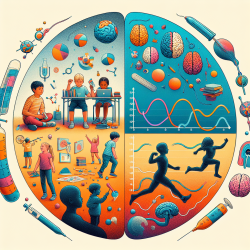Understanding the nuances of turn-taking in sign language conversations is critical for speech-language pathologists working with deaf and hard-of-hearing (DHH) children. The research article "Acquisition of turn-taking in sign language conversations: An overview of language modality and turn structure" by Horton and Singleton provides a comprehensive overview of how turn-taking is acquired in sign language and offers valuable insights that practitioners can implement in their therapy sessions.
Key Findings and Practical Applications
Based on the research, here are some key findings and practical applications that can help improve outcomes for DHH children:
1. Visual Attention Management
One of the unique aspects of turn-taking in sign language is the need for visual attention. Unlike spoken language, where auditory cues can signal turn changes, sign language relies heavily on visual cues. Practitioners should focus on training children to maintain eye contact and use visual signals effectively.
2. Explicit Attention-Getting Strategies
The research highlights the importance of explicit attention-getting strategies such as tapping, waving, or using visual signals to capture a child's attention. These strategies are particularly useful in classroom settings where multiple interactions occur simultaneously.
3. Adapting to the Child's Visual Field
Deaf signing parents often adapt their signing to fit within the child's visual field, ensuring that the child can see the signs without having to shift their gaze significantly. Practitioners can incorporate this strategy by positioning themselves within the child's line of sight during therapy sessions.
4. Use of Gaze and Non-Manual Cues
Gaze direction and non-manual cues (such as facial expressions) play a significant role in turn-taking. Practitioners should teach children to use and interpret these cues effectively, enhancing their ability to engage in conversations smoothly.
5. Tailoring Interventions Based on Social Settings
The research distinguishes between turn-taking in home settings versus classroom settings. In classrooms, the competition for visual attention is higher, and practitioners should tailor their interventions to help children navigate these complex social environments.
Encouraging Further Research
While the current research provides a robust foundation, there is a need for more studies that document naturalistic conversations between DHH children and their caregivers, teachers, and peers. Future research should also consider the role of visual/manual cues and the unique demands of multi-party conversations in classroom settings.
To read the original research paper, please follow this link: Acquisition of turn-taking in sign language conversations: An overview of language modality and turn structure.










